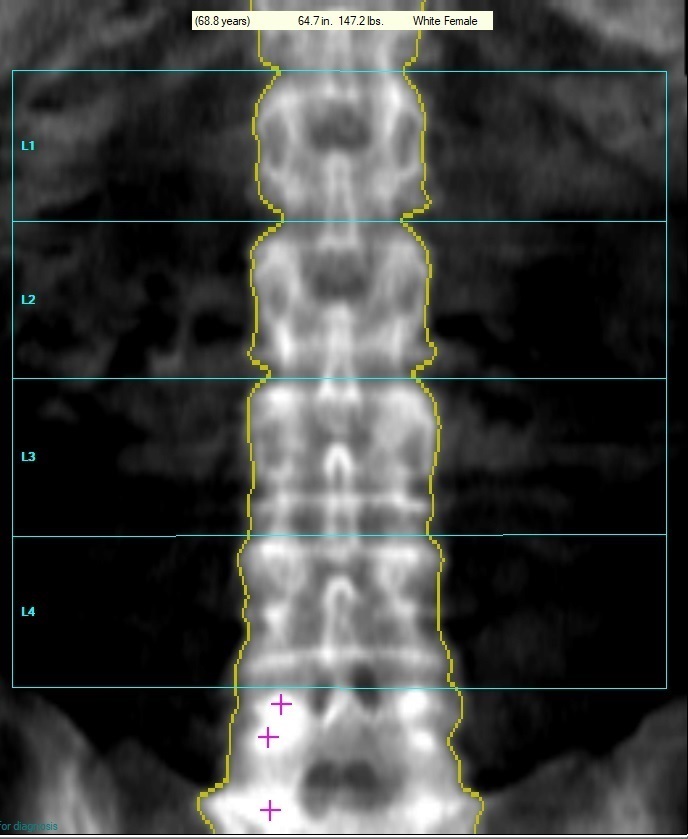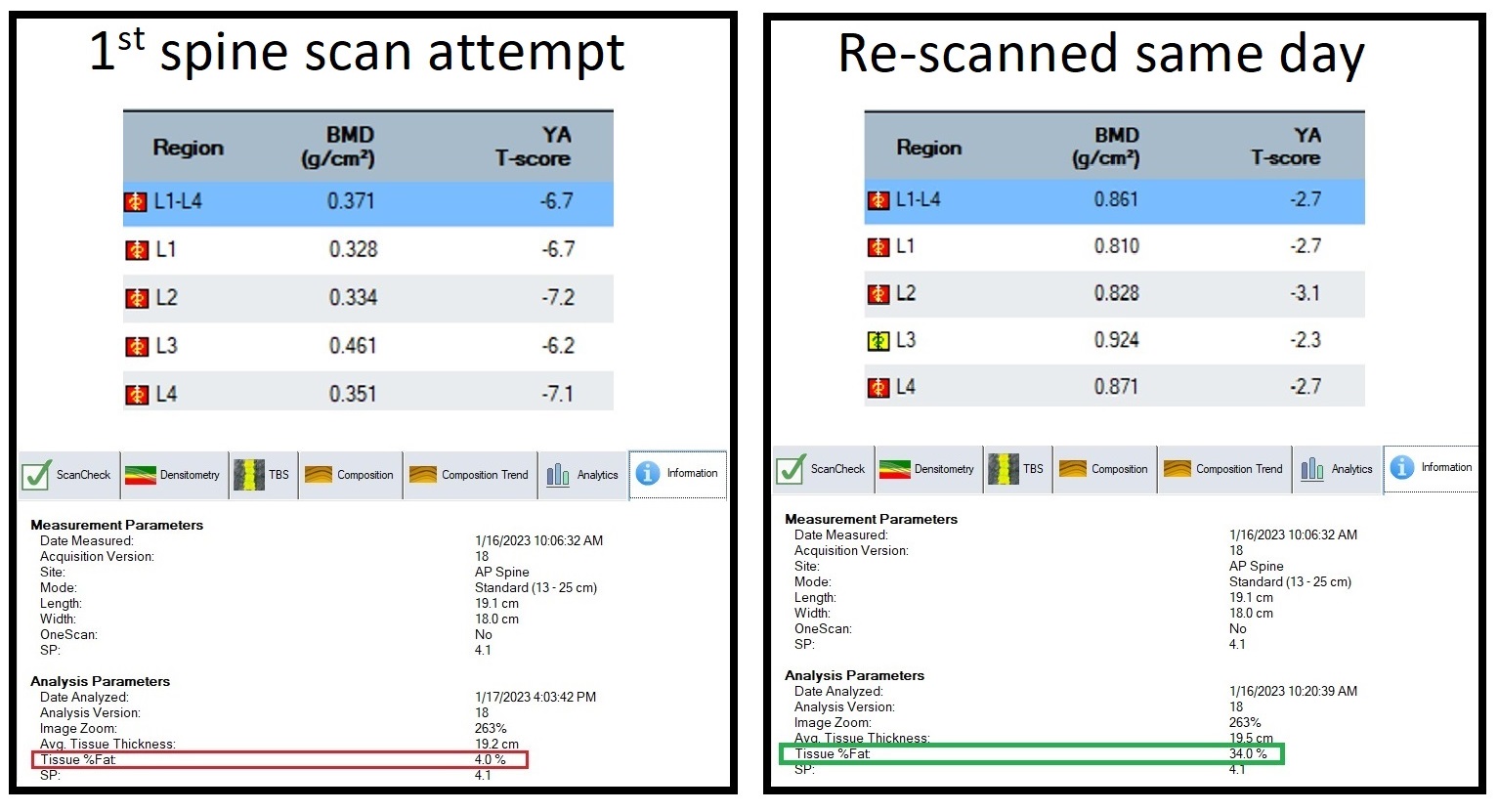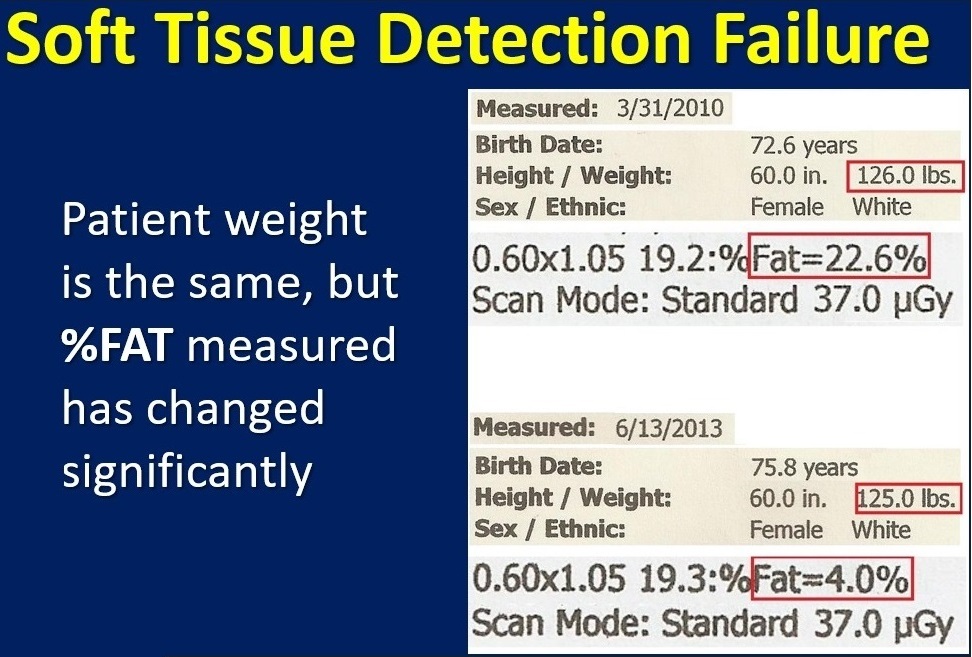Rare GE-Lunar 4% fat, soft tissue detection failure resulting in the false appearance of extraordinarily low BMD
A 68 y.o. female had two spine DXA scans on the same day. Both images and analysis visually look the same, but the BMD increased by more than 100%.

In GE-Lunar’s enCORE software, %fat can be found in the ‘Information’ tab of the ‘Analyze’ screen. It can also be seen in the fine print at the bottom of the image pages in PACs or on printouts.

Images 2a and 2b show a different individual’s DXA scan. This case demonstrates the implausible magnitude of BMD change between serial scans.

The patient’s weight on each date is nearly identical, but the %fat calculated is very different. Soft tissue detection failure can have an enormous impact on the apparent measurement.

When GE-Lunar’s enCORE software displays a %fat measurement of 4, it is different than other Point Typing (mapping) issues. The scale does not go below 4, so this equates to zero soft tissue detected. DXA uses dual-energies and relies on the detection of both soft and calcified tissues to calculate an accurate BMD measurement.
With GE-Lunar DXA scans, it is helpful to look at the %fat calculated to ensure that the value is not 4.0%. When tissue detection fails, the results are inaccurate and artificially low. This effect doesn’t always produce an extraordinarily falsely low T-score (although it can), but it does result in an enormous change once fixed.
This issue is very rare, but it can occur for any site. Occasionally, it happens for no apparent reason, but usually it is related to atypical anatomy or suboptimal positioning.
If the auto-analysis screen shows 4% fat before any technologist intervention, the best remedy is to repeat the scan. GE’s enCORE User Manual cautions against manually adjusting Tissue points. If the technologist accidentally neutralized all of the soft tissue points, it can be corrected by clicking ‘Reset’ in the Point Typing screen to bring back the detected tissue.
Wendy Tolman-Andrews, BS, RT(BD), CBDT, UConn Health, Radiology, Musculoskeletal Institute, Farmington, CT
Emma O. Billington, Neil Binkley, Diane Krueger, Gregory A. Kline, William D. Leslie, Automatic soft tissue detection failure in DXA: The 4% fat error, Journal of Clinical Densitometry, 2022, ISSN 1094-6950, https://doi.org/10.1016/j.jocd.2022.11.001. (https://www.sciencedirect.com/science/article/pii/S1094695022000932)